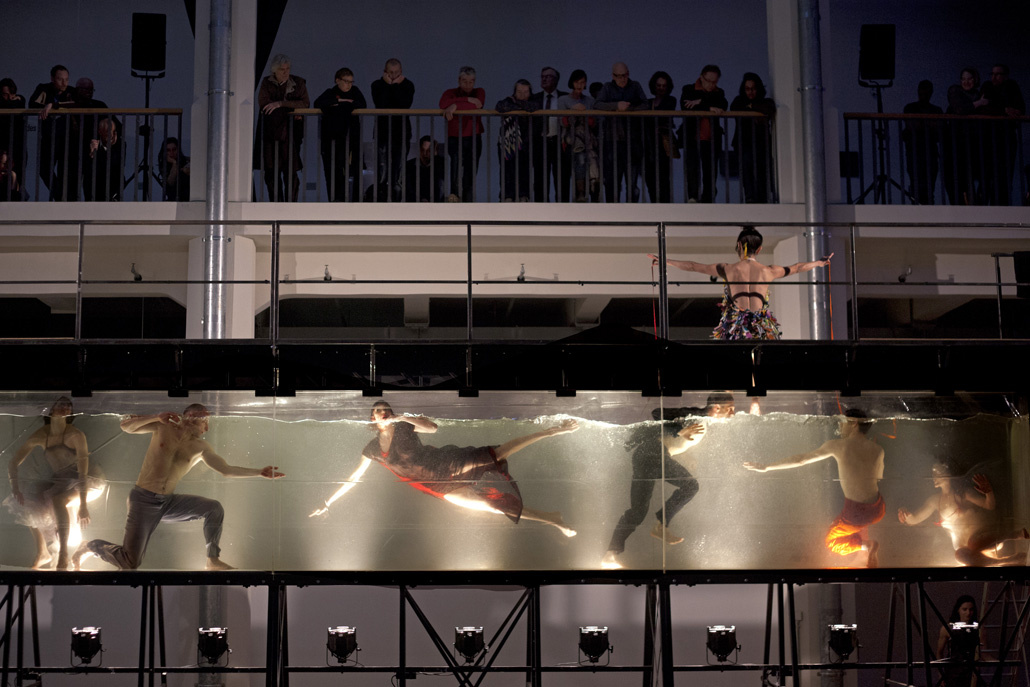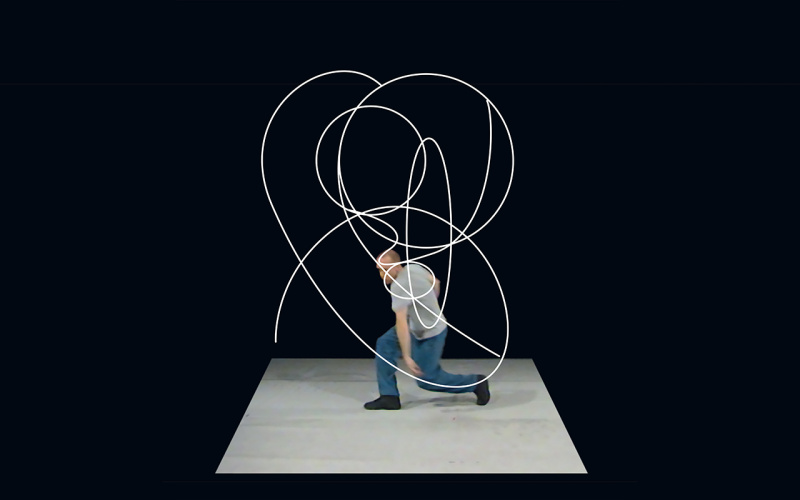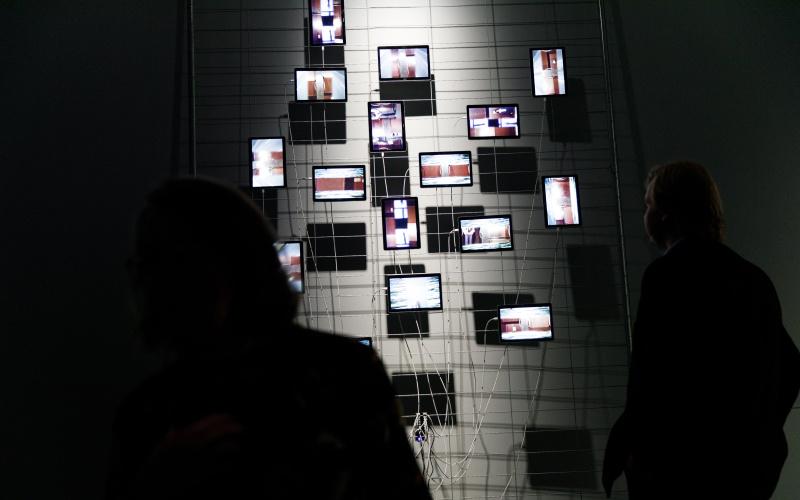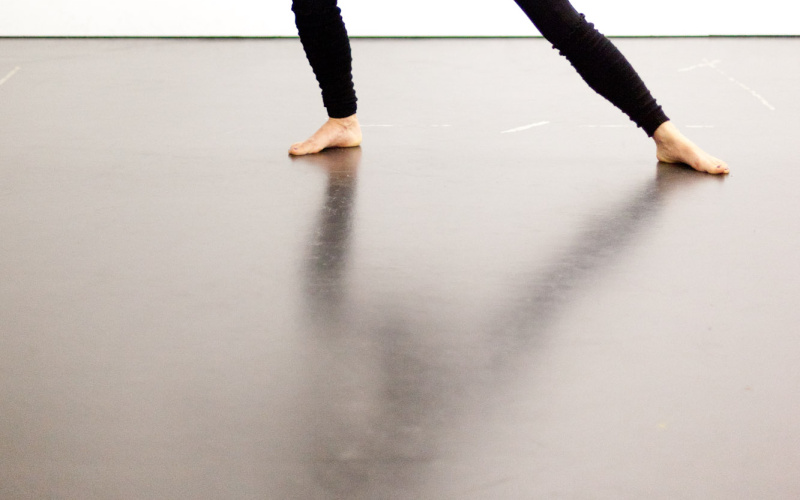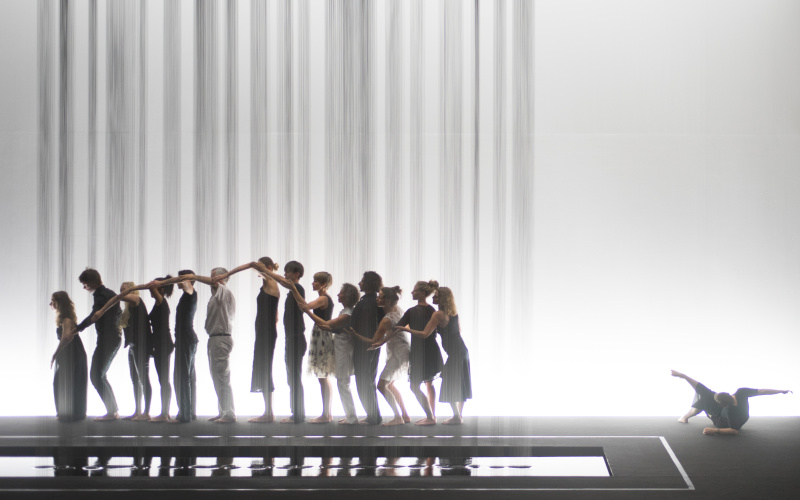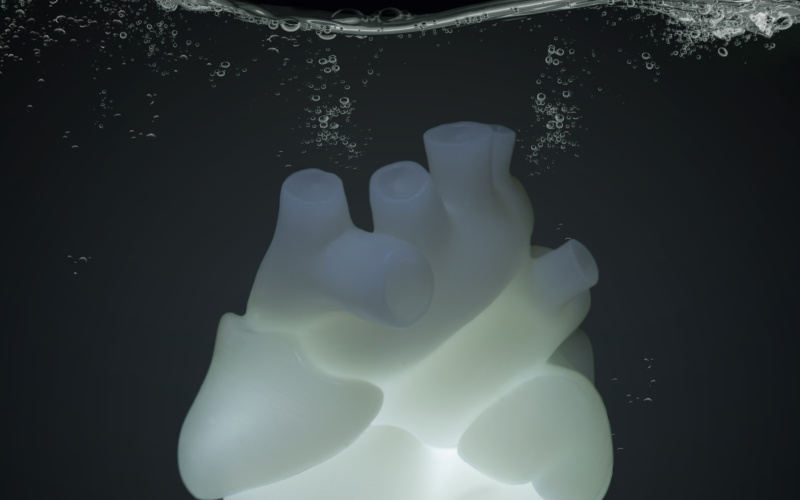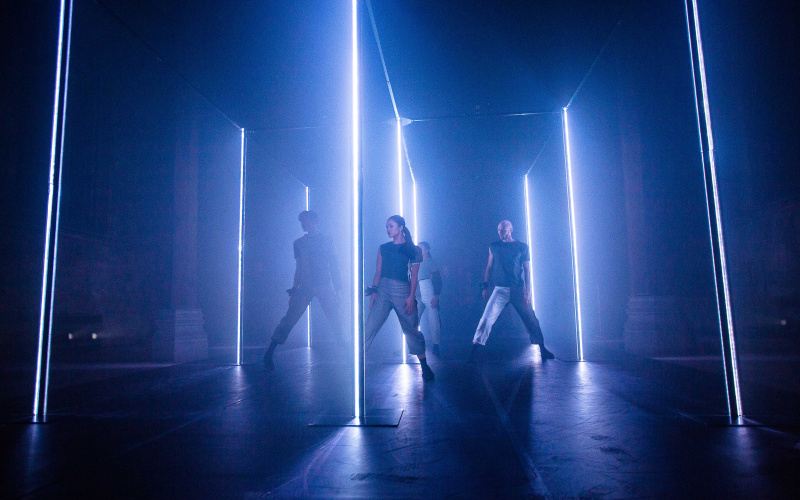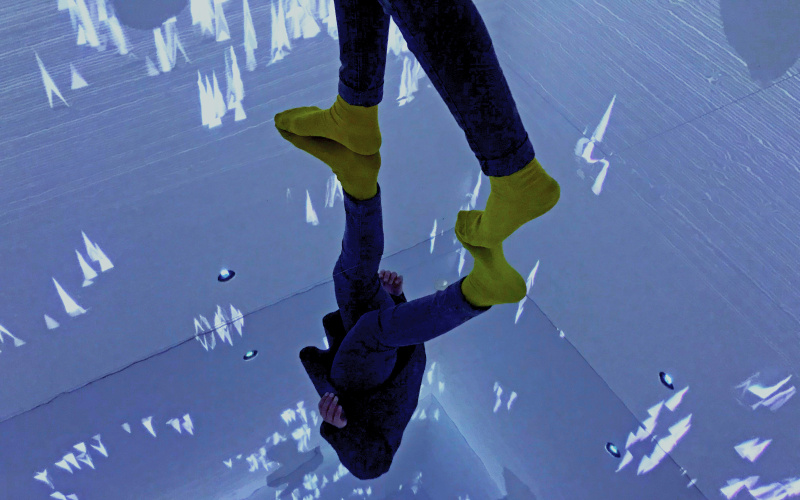Tanz/Performance
At the outset of the twentieth-century, the avant-garde dismissed the program of representation in classical arts, namely, the reproduction of the world of objects.
Painting no longer represented the world with its specific means of reproduction, but now solely the means of reproduction themselves, such as point, line, color, surface etc. The result was abstract art, in both in painting and sculpture. Since representation of the object was now frowned upon, the object itself was able to find a way into the art system. Abstraction and object art are thus the primary achievements of the first half of this century.
After 1945, the neo-avant-garde abandoned the closed system of aesthetic objects, and went all out in introducing two new tendencies: open fields of action and technical media, from moving image to sound art. With the »Ausstieg aus dem Bild« [departure from the picture] (László Glózer) in the direction of assemblage, environment, and installation on the one hand, and action, happening, event, performance, film, and video on the other, came also a dissolution of the boundaries between spatial and time-based arts, as well as between art and life.
It was the leaning towards action that gave rise to action painting, which, in turn, led to performance painting in front of an audience. Hans Namuth’s photographs and film of Jackson Pollock painting popularized the idea of action painting around 1950. The canvas spread out on the floor, (for the dripping paint), turned the vertical panel painting into a horizontal arena of action. Via photography and film, the act of painting evolved into a performance, an action before an audience. Georges Mathieu thus painted on stage in front of a real audience, for example, before 2,000 spectators at the Theater Sarah-Bernhardt in Paris in 1956. Inspired by Pollock and Mathieu, in 1960, Yves Klein used the naked female body as a brush. Thus, painting was transformed from pure pictorial and representational art into action and performance art in a three-step movement – »action on the screen, action in front of the screen, and action without a screen.« Painting had thus already initiated and accomplished a performative turn.
Following a similar pattern, action poetry evolved from poetry, and action sculpture from sculpture, for example, Joseph Beuys’ »social sculpture,« Gilbert & George’s »Singing Sculptures,« (1969), and Franz Erhard Walther’s »OBJEKTE, benutzen« (1968).
The fine arts had thereby transformed spatial art into time-based art. The further development of art towards the movement of the body in space, such as body art, heralded a renewed interest in dance. Where these bodies were no longer human, but rather objects, an art drama or theater evolved from sculpture. Michael Fried’s accusation of theatricality (»Art and Objecthood«, 1967) directed toward minimal art, describes nothing other than the performative turn, also in sculpture, as promoted by artists such as Joseph Beuys and Robert Morris. For this reason, in the U.S., a convergence occurred of sculpture and theater, sculpture and dance, ranging from Simone Forti to Yvonne Rainer. Through collaborations by John Cage, Merce Cunningham, Jasper Johns, and Robert Rauschenberg, the fusion of painting, sculpture, dance, and music, became the sign of the »performative turn« in the 1960s. Performance arts and exhibition forms assumed a new unity, which spawned new forms of action in art: Happening, fluxus, action, and performance. Dance, a time-based art form, now became part of the formerly spatial fine arts.
Following the introduction of action, two contrary trends can be discerned in the contemporary avant-garde: the spatial arts, such as painting and sculpture, tend to transform into time-based arts. The time-based arts, such as dance, music, poetry and performance, tend towards the two- and three-dimensional spatial arts, namely, installation, sculpture, and the object. Pictures, sculptures, and objects are transformed into actions. One such example of this performative turn is »Drama Queens« (2007) by Elmgreen & Dragset, a thirty-minute performance featuring speaking sculptures (superstars in the history of modern sculpture). Action forms of music, theater (Christoph Schlingensief), and above all, dance (William Forsythe and Sasha Waltz), tend towards installations and object-assemblages. Accordingly, with the transformation of dance, theater, and other performative actions into two and three-dimensional objects – namely, into pictures, sculptures, and installations, it is possible to refer to an »installative turn.« In both cases, this takes place with the help of the new storage media of video and film.
Since its founding in 1989, the ZKM has taken upon itself the task of exhibiting and collecting not only classic object arts, such as painting and sculpture, but also the immaterial, acoustic and performative arts, from new media through to dance; in other words, not only spatial, but also time-based arts. Consequently, since 1999, the ZKM has set a focus on the art forms of dance, performance, and activism, and devoted a number of catalogues, DVDs, and large-scale exhibitions to them, such as »William Forsythe: Improvisation Technologies. A Tool for the Analytical Dance Eye« (1999/2003), »Making Things Public. Atmospheres of Democracy« (2005), »You_ser« (2007–2008), »Franz Erhard Walther. Space Through Action« (2012), »Richard Siegal and The Bakery: HOMO LUDENS« (2008/2009), »Moments. A History of Performance in 10 Acts« (2012), »Sasha Waltz. Installations Objects Performances« (2013/2014), »Swarm Lake« (2013), by Chris Ziegler, »global aCtIVISm« (2013/2014), or »Beuys Brock Vostell« (2014). Furthermore, the ZKM initiated the »Walter Fink Prize« for Dance, Electroacoustic Music, and Media.
Focus is thus on the feasibility of exhibiting action, demonstration, dance, and performance: the shift from the street into the museum, from public arena to institutional space, from theater stage to exhibition space, from time-conditioned performance to permanent exhibition, from action, intentionally performed outside the art context, to document in the museum archive. The ZKM devotes itself to the new, specific kinds of problems that these new artistic forms of expression signify for the museum, the exhibition, and the archive. All that remains after the performance, the event in space and time almost invariably before an audience, are traces: immaterially, in the viewer’s memory; materially, in the form of acoustic or visual documents. Action art, performance, and the art of dance encounter the problem of storage media. Hence, the ZKM | Media Library and the ZKM Collections house key performance videos and video documentation of performances, as well as archival materials on actions, happenings, performances, events, process-based and theatrical demonstrations, performance arts, concerts, media operas, media-supported musicals and dance events, and perhaps the world’s most comprehensive collection of interactive artworks.
Author: Peter Weibel
